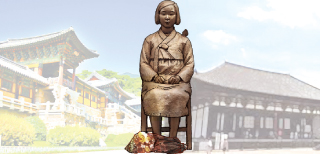The Nara way
Published: 01 Feb. 2018, 21:35

[KIM HOE-RYONG]
President Moon Jae-in launched a task force to probe the agreement reached by the former administration. The task force raised various questions, including how the behind-the-scenes deal between Seoul and Tokyo came to a sudden settlement. The government demanded a sincere apology and action toward the victims, but added it won’t press for a renegotiation.
A breakthrough in bilateral ties can be inspired by the city of Nara. Our group held a meeting with Nara Mayor Gen Nakagawa in a room named after the Korean ancient city of Gyeongju on the fifth floor of the city hall. The room was decorated with the landmarks of the capital of the ancient Shilla Dynasty (57 B.C.–A.D. 935) including photos of Bulguksa temple and Seokguram grotto, ancient maps, ceramics and other souvenirs.
“In 2020 when Tokyo holds the Summer Olympics, we will be celebrating the 50th year of sisterhood with Gyeongju,” he said. Tokyo and Seoul may have differences, but the thousand years of history of the two cities Nara and Gyeongju allow them to be more open and farsighted in their mutual relationship, he stressed.
Shogo Arai, Governor of Nara Prefecture, handed over a pamphlet in Korean that introduced the Asuka period and culture under the influence of Baekje. “Japan blossomed from international exchanges,” Arai said. “Nara is proud of its gains from overseas.”
The fad over K-pop and culture remains hot. Girlgroup Twice and boy group BTS are hugely popular among Japanese teenagers, said a veteran Japanese journalist. Those raving about Korean beauty products and style do not care where they come from, he noted. Regardless of the diplomatic standoff on the formal level, relations among local governments and civilians remain intact. “We live in a decentralized era when exchanges at city and citizen level can affect national level. What matters is how each individual sees a certain country,” Nakagawa said. The breakthrough in the Moon Jae-in government’s so-called two-track policy to separate history issues with economic and cultural affairs should be found at the local and civilian level.
JoongAng Ilbo, Jan. 30, Page 29
*The author is a political news reporter of the JoongAng Ilbo.
PARK YU-MI










with the Korea JoongAng Daily
To write comments, please log in to one of the accounts.
Standards Board Policy (0/250자)